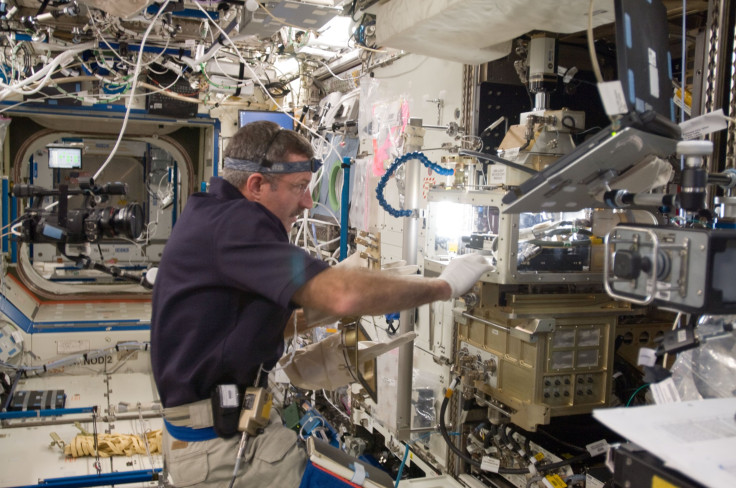SpaceX ISS Cargo Mission For NASA Will Carry 3D Upgrade For Space Station Microscope

The International Space Station (ISS), orbiting between 205 and 270 miles above Earth, has plenty of instruments onboard that can look into the distance, including cameras that routinely send back breathtaking pictures of our planet. But the orbiting laboratory also houses an advanced microscope, called the Light Microscopy Module (LMM), which is set to get an upgrade.
The SpaceX cargo mission for NASA, scheduled for a Thursday evening launch to resupply the space station, will carry the upgrade module that will give the microscope 3D capability, instead of the two dimensions it is currently limited to. The LMM upgrade “will enable 3D imaging of complex fluid structures and allow for modeling the movement of individual particles at the micron level,” NASA said in a statement, Wednesday.
Read: Space Station To Receive Instrument To Study Neutron Stars
A 3D microscope is especially useful on a place like the space station, where the effects of gravity are not felt. That is so because gravity quickly separates particles that are suspended within another substance, when on Earth, limiting the observer’s ability to see the exact nature of the particles. Using a high-precision microscope in an environment without gravity gets around that problem.
“We’ll have a 3D capability that will expand our ability to see what is going on at a fundamental level,” Ron Sicker, project manager at NASA’s Glenn Research Center in Cleveland, said in the statement.
Hardware in the upgrade module includes a laser light package, two high-resolution digital scientific cameras and a scanner. It will also eliminate unnecessary light caught by the microscope, thereby improving its resolution and contrast.
To work, a green laser light will first focus light tightly onto microstructures that are glowing brightly. The cameras will captures images of the structure then, at the rate of 10 frames every second. Slowly, as the microscope stage is raised, the entire structure is replicated layer-by-layer in a 3D model, which can then be rotated and examined from any angle.
A high-resolution 3D image that can be viewed from any angle will help researchers understand microstructures better, and “could open a whole new world of science,” Sicker said.
Read: NASA Will Study How Fires Work In Space, Aboard ISS
Another instrument being sent to the ISS with Thursday’s resupply mission is the Neutron Star Interior Composition Explorer, which like its name suggests, is designed to help us unravel some of the many mysteries of neutron stars. It is the first NASA mission dedicated to studying the second-most dense objects in the universe that we know of (their close relatives, black holes, being the densest). The NICER instrument will observe both regular neutron stars as well as the special kind, called pulsars.
The SpaceX Falcon 9 rocket, with a Dragon cargo spacecraft, is scheduled to launch from Launch Complex 39A at NASA’s Kennedy Space Center, Florida. The instantaneous launch window is for 5:55 p.m. EDT, and a live webcast can be seen here.
© Copyright IBTimes 2024. All rights reserved.





















